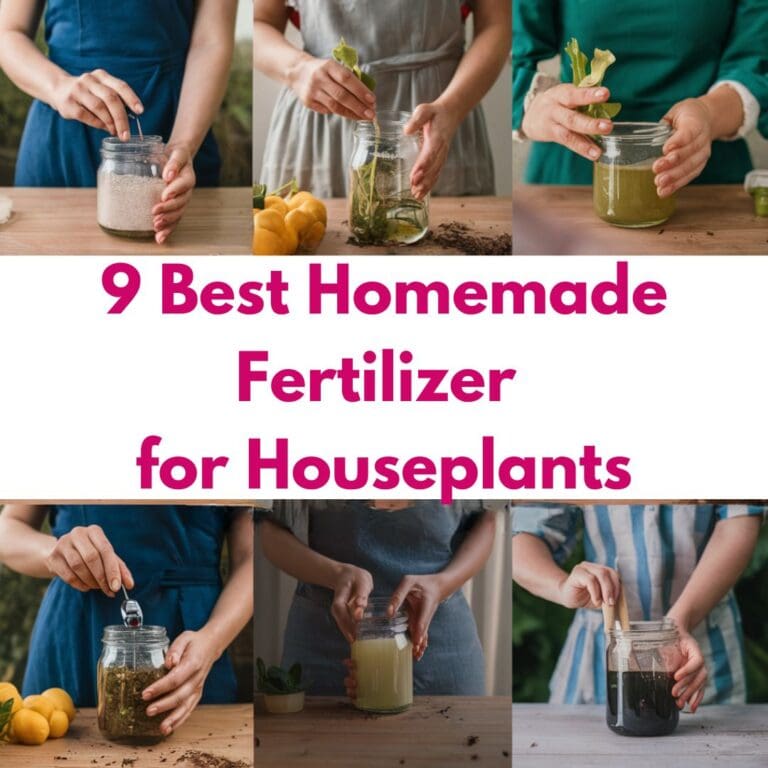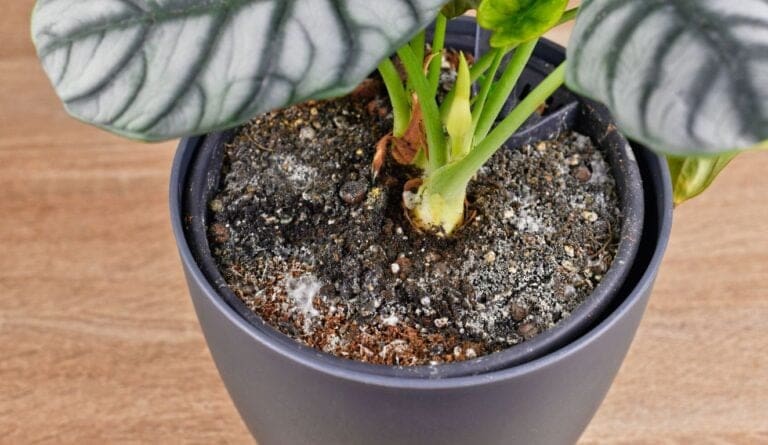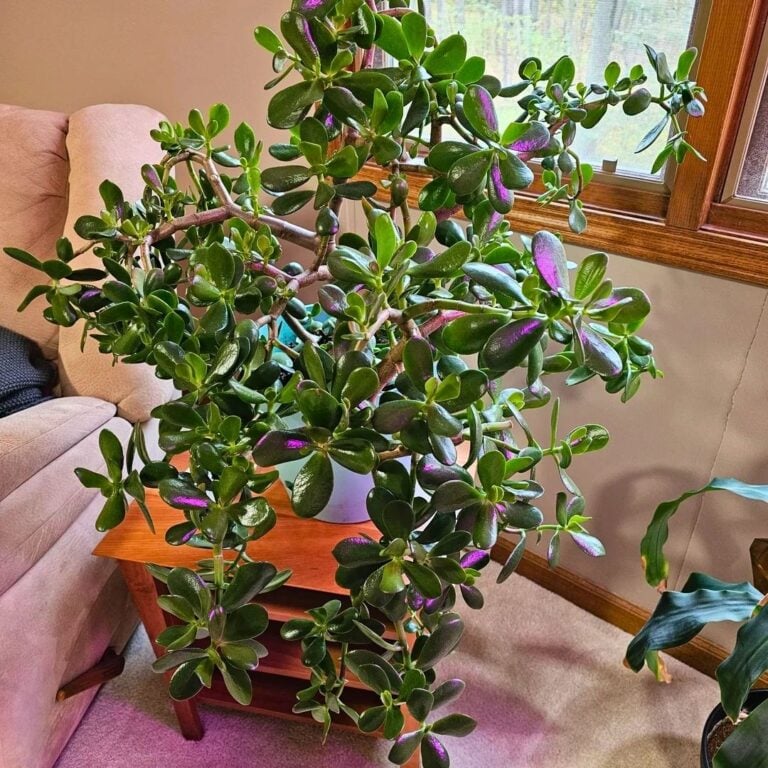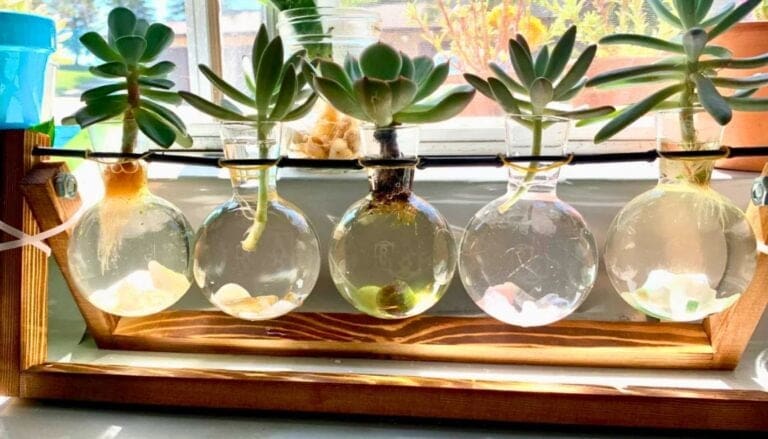10 Tiny Upgrades to Get Your Houseplants Fall-Ready
When fall rolls in, I want my houseplants to feel cozy and healthy. The shorter days and cooler air can really throw them for a loop.
Honestly, I’ve noticed that even tiny changes can make a huge difference for my plants during autumn.
A handful of simple upgrades, and they seem to stay much happier and more vibrant.
Please note: Simplify Plants is reader-supported. As an Amazon Associate, I earn from qualifying purchases made by our readers with no extra cost added to you all! Some links in the post are affiliate links and I get a commission from purchases made through links in the post.
1) Switch to a grow light with adjustable spectrum
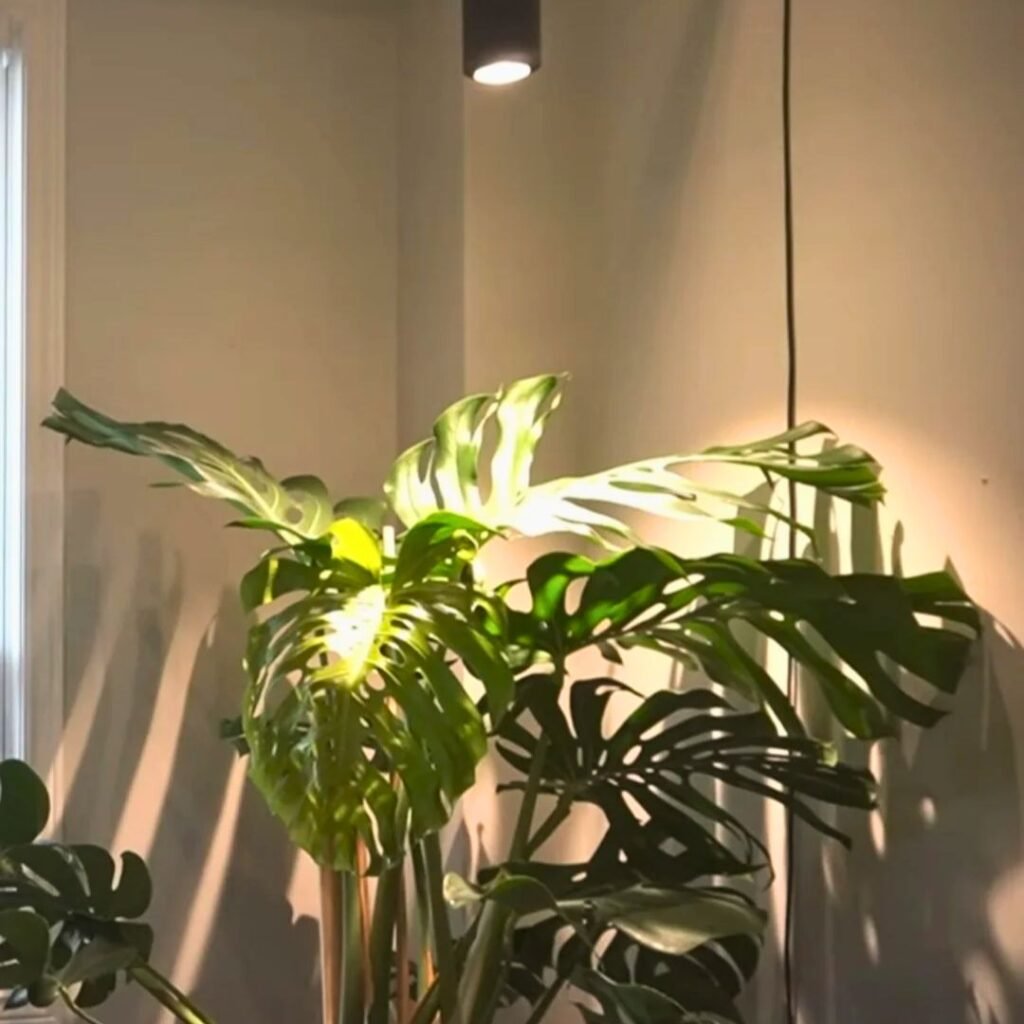
When fall arrives, I can tell my houseplants aren’t soaking up as much sunlight as before. I like using a grow light with an adjustable spectrum to help them out.
These lights let me tweak the color and brightness, which is great since not all plants want the same thing. Some prefer more blue light, others need a bit more red, especially if they’re flowering.
With just one light, I can cater to a bunch of different plants. I also like that I can adjust the timing and intensity, so my plants get a routine even on gloomy days.
Many of these lights are super easy to set up, even if you’re not a plant nerd. Some have timers or remotes—makes life easier.
Since I started using an adjustable grow light, my plants just look better. They’re greener and don’t seem as stressed when the seasons shift.
It’s nice not having to buy a bunch of different lights. One good adjustable light covers my whole collection.
If you haven’t tried it yet, I’d say it’s worth it. Your plants will be happier, for sure!
2) Add a humidity tray with pebbles
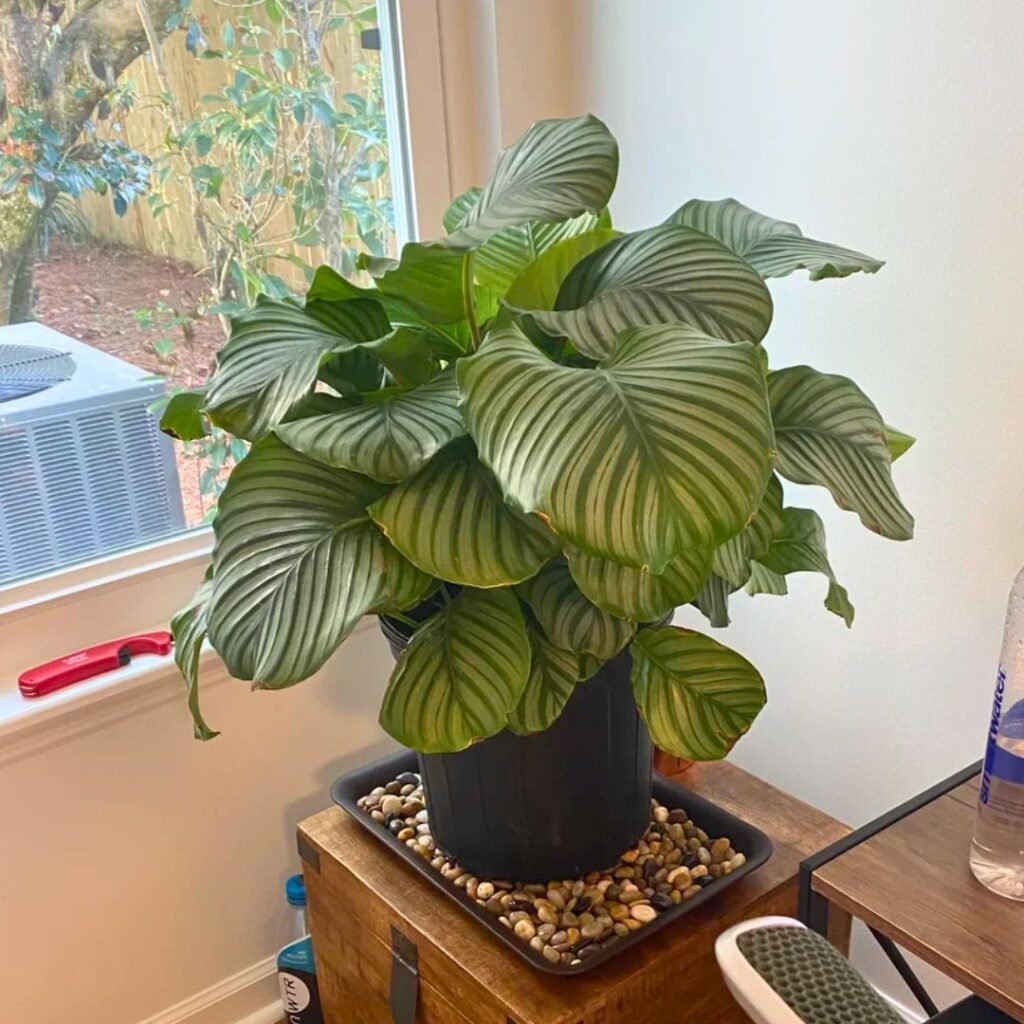
As soon as the heat kicks on in my place, the air gets dry and my plants start to notice. Dry air means brown leaf tips and crispy edges. That’s when I grab a humidity tray and some pebbles.
I just grab a shallow tray, pour in some small stones, and add water until it’s just at the bottom of the pebbles. The plant pot sits on top—never directly in the water.
As the water evaporates, it gives a little humidity boost right where the plant needs it. It keeps those leaf tips looking soft and green. No humidifier needed.
This trick works best for my humidity-loving plants like ferns and calatheas. It only takes a few minutes to set up, and honestly, it makes a noticeable difference during fall.
I check the tray every so often and top up the water when it’s low. Keeping plants away from drafts and heaters helps too, but the pebble tray is my go-to quick fix.
It works for a single plant or a whole cluster, and I like knowing I’ve done something small that actually helps as the air gets drier.
3) Use Organic Indoor Plant Fertilizer

When fall hits, my houseplants definitely sense the change. The sun’s not as strong, and everything cools down.
To keep them happy, I use Espoma Organic Indoor Plant Food. It’s liquid, so I just shake, measure, mix with water, and pour it in.
My favorite thing is that it’s organic and safe—no harsh smells or weird stuff. Pets and kids can be around it, which is a relief.
A little feeding helps my plants keep strong roots and avoid dropping leaves. In fall, I’m careful not to overdo it—once a month is plenty.
I notice my leaves stay greener and even my pickier plants seem to perk up. It’s not a miracle, but it does give them a gentle nudge when light is lower and days are shorter.
I stick to the label’s directions and don’t overcomplicate things. A bit of care goes a long way as the weather cools down.
4) Swap to a moisture meter for precise watering

I used to just poke the soil and hope for the best, but that wasn’t always working. A moisture meter tells me, plain and simple, if the soil’s dry or still damp.
Just stick the probe in and check the reading. It shows dry, moist, or wet—couldn’t be easier.
This takes the guesswork out of watering. With the fall temperature swings, my plants don’t need water as often, and the meter keeps me from sticking to a rigid schedule.
Sometimes the top looks dry but the roots are still wet. The meter checks deeper down, so I don’t accidentally drown my plants.
It’s cheap, reusable, and I can use it on every plant. Wipe it off, move to the next pot—that’s it.
Honestly, using a moisture meter feels like a little superpower. I’m way more confident and my plants seem to appreciate it.
5) Apply Neem oil spray for pest control
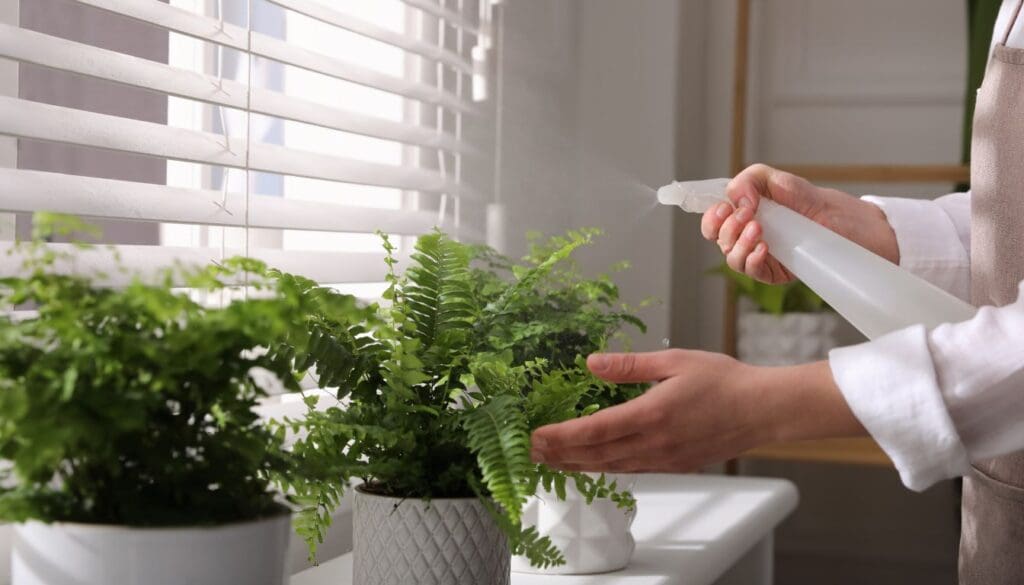
I start spraying Neem oil as soon as fall arrives. Neem oil’s a natural option that helps me keep pests like spider mites and aphids from taking over.
I mix about one teaspoon of Neem oil with a quart of warm water and a little mild dish soap, then shake it up in a spray bottle. I always test a leaf or two before spraying the whole plant, just in case.
I focus on the tops and undersides of leaves, since that’s where pests love to hide. Early morning or late afternoon is best, so the sun doesn’t scorch the leaves.
Neem oil is easy to use and gives me peace of mind. It helps my plants stay healthy as the weather cools down.
Spraying every couple of weeks keeps little pest problems from getting out of hand. If I see sticky spots or curling leaves, I check for bugs and spray right away.
The smell is a bit strong at first, but it fades quickly. I like that I can use it indoors without worrying about chemicals.
I stash my Neem oil spray in a cool, dark spot so it stays fresh. It’s always ready when I need it, and honestly, this little routine makes a big difference for my plants as fall sets in.
6) Repot with FoxFarm Ocean Forest Soil
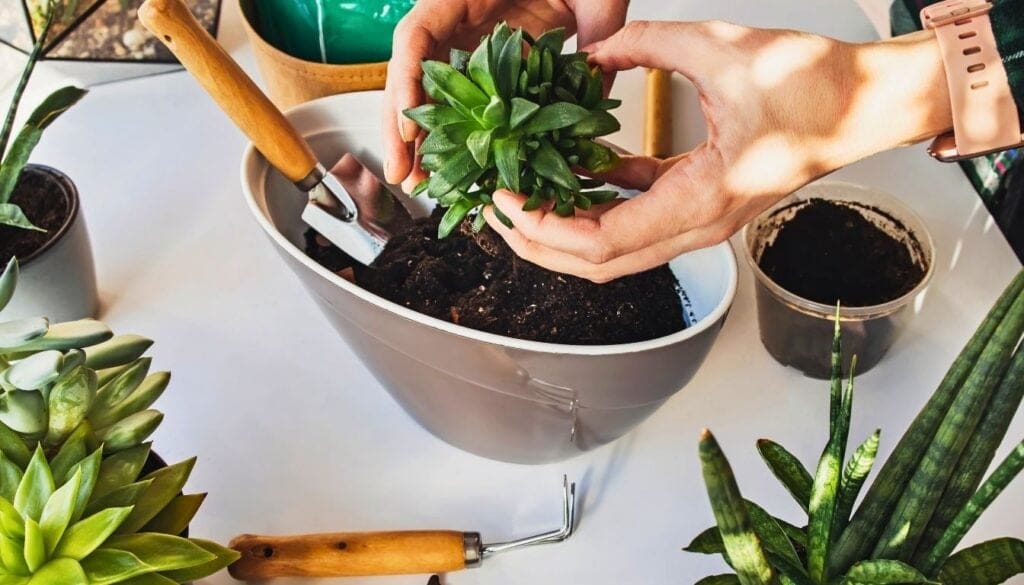
When fall’s here, I like to freshen up my plants’ soil. FoxFarm Ocean Forest Soil is my favorite because it’s packed with good stuff—earthworm castings, bat guano, even bits of crab and fish.
This mix helps roots grow strong and keeps water from pooling at the bottom. It’s got a light texture, so repotting isn’t a hassle or a mess.
I pick a pot that’s just a bit bigger, loosen the old soil, and add a layer of Ocean Forest Soil. The plant goes in, then I fill the sides and top with more fresh soil.
A soil refresh like this gives my plants a real boost before winter. I’ve noticed their leaves stay greener and their stems get sturdier.
Repotting is also a good time to check the roots for any problems. I want to see clean, healthy roots before settling them into new soil.
Ocean Forest Soil comes ready to use, which is nice. For sensitive plants, I water lightly after repotting to help them settle.
Honestly, fresh soil makes a difference as fall sets in. It’s a quick step that really helps my plants handle the seasonal change.
7) Place plants near south-facing windows
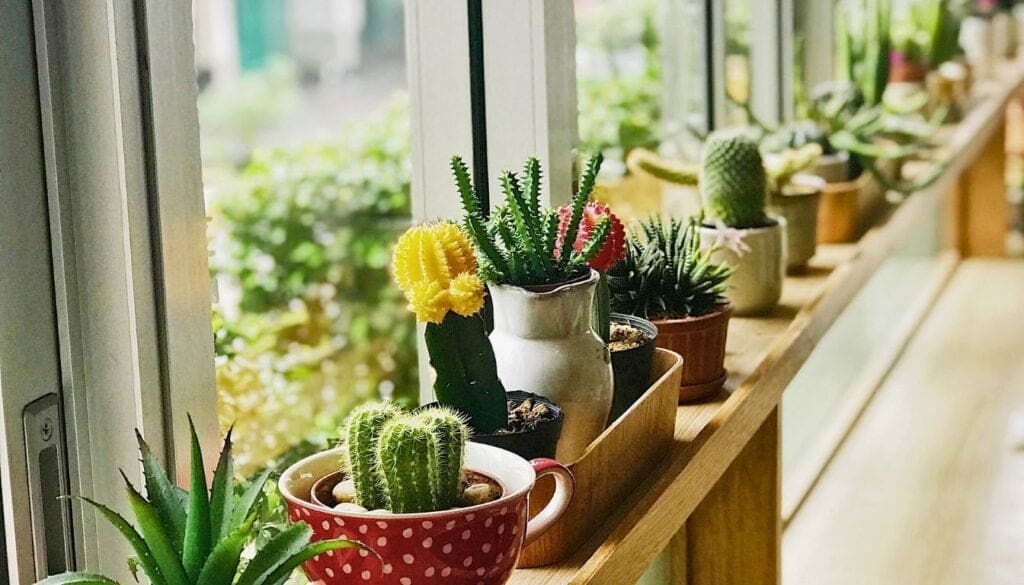
When the days get shorter, I move my houseplants closer to my south-facing windows. That’s where the most sunlight comes in during fall.
South light keeps my plants happy. Most slow down a bit in autumn, but extra sunlight helps them keep growing.
I notice greener leaves and sturdier stems when they’re near a bright window. If they’re too far away, they get pale or leggy.
I always leave a gap between pots and the cold glass—no one likes chilly leaves overnight.
I rotate the pots every week or so, just so all sides get a turn in the sun. Plants grow more evenly that way.
If a plant looks droopy or stretched, I move it closer to the window and usually see it bounce back.
Succulents and cacti especially love this spot, but I watch for sunburn. Sheer curtains help if the sun’s too intense.
Wiping the window glass and the plant leaves makes a difference, too. Clean surfaces let in more light and help the plants soak it up.
Honestly, moving my plants to a sunnier window is one of the easiest ways to help them handle fall.
8) Rotate plants weekly for even growth
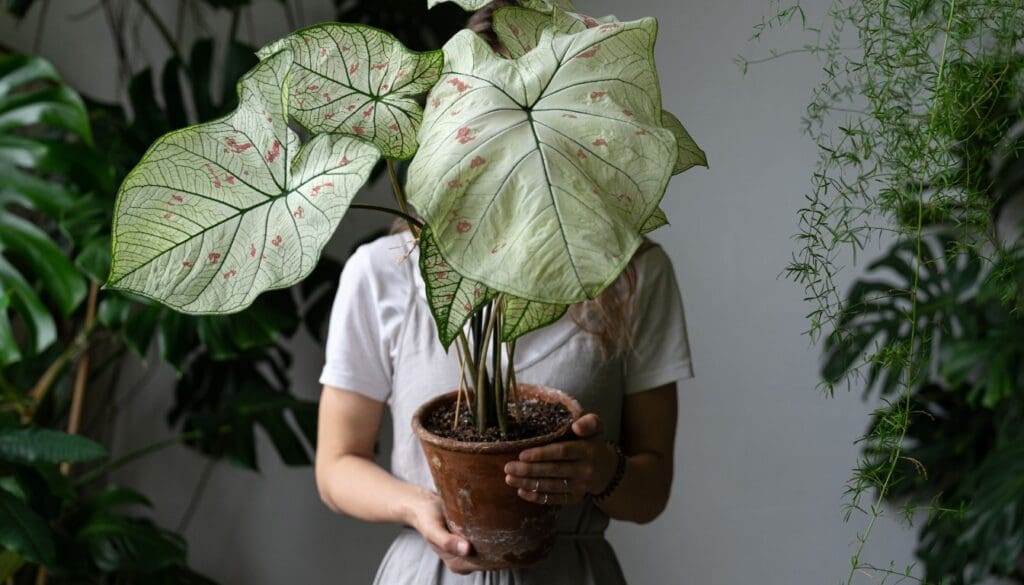
Honestly, I try to rotate my plants once a week—it’s a habit that’s stuck with me. It sounds basic, but wow, it really does help.
Light from the window usually hits just one side, so plants can start to lean or get a little lopsided. If I give each pot a small turn when I water, every side gets a shot at the sun.
That simple move keeps my plants growing straight and balanced instead of off to one side. I’ve started seeing stronger stems and leaves that look much healthier.
They even look fuller and more lush when all sides get enough light. It’s honestly one of the easiest tricks I use to keep my houseplants looking sharp.
I set a phone reminder so I don’t forget. A quick turn once a week is usually all it takes to keep plants from looking weirdly tilted.
For my big pots, I turn the whole thing carefully. With little pots, I just spin them in place—no fancy tools, just my hands.
Making this part of my routine has even helped my pickier plants. Even light means even growth, and that’s what I’m after.
9) Add a layer of sphagnum moss on soil
I like to give my houseplants a little extra care in the fall. One quick trick is adding a thin layer of sphagnum moss on top of the soil.
Sphagnum moss is great at holding moisture. When I water my plants, the moss helps the soil stay damp longer, which is a lifesaver when the air gets drier indoors.
I’ve noticed the moss kind of acts like a blanket for roots. It helps protect them from sudden cold snaps, especially since fall temperatures can bounce all over the place.
Some pests, like fungus gnats, love bare soil. Moss covers the surface so those bugs can’t get in as easily.
Plus, it just looks nice. The soft green moss makes pots look fresh and cozy, which is a vibe I’m totally here for in the fall.
If you want to try this, just add a thin layer—about half an inch is plenty. Don’t squish it down too much. You want it fluffy, not packed.
When I water, I pour slowly so the moss can soak it up. Even if the moss dries out, it still helps a bit, but I try to keep it lightly moist.
I stick with real sphagnum moss—no dyed or preserved stuff. Fresh or dried works, as long as it’s clean and safe for plants. I always take a quick look at the label for additives.
It’s such a simple fall upgrade and takes barely any time. For me, it’s a little thing that really helps my houseplants get through the season.
10) Dust leaves gently with a microfiber cloth

I always make time to dust my houseplant leaves because clean leaves just work better. Dust and dirt can block light, which isn’t great for growth.
I use a soft microfiber cloth to gently wipe away dust. It’s gentle and won’t scratch. Usually, I hold the leaf in one hand and wipe with the other, going slow.
Every leaf picks up dust, especially with open windows or pets around. I check both sides of the leaves. It doesn’t take long, but wow, it really helps.
When leaves are clean and shiny, my plants look so much brighter. I swear they even look better in photos. Plus, fresh leaves make my space feel more inviting.
I’ve found it’s easiest to clean leaves every couple of weeks. For bigger or super dusty plants, I’ll sometimes rinse with water first, but most of the time a dry microfiber cloth is enough.
Avoid rough cloths, paper towels, or anything with harsh chemicals. Those can mess up the leaves. If I find sticky spots, I’ll dampen one side of the cloth, but I try not to splash water on the soil.
Dusting is a small thing, but it helps me check for any issues or pests. It keeps my plants looking good and feeling healthy all fall.
Understanding Seasonal Needs for Houseplants
Fall brings a bunch of changes—temperature, light, humidity. I have to watch for these shifts so my plants can stay healthy.
How Fall Impacts Indoor Plant Care
As days get shorter, my houseplants get less sunlight. I notice their growth slows down, so I cut back on water and food. If I keep up with my summer routine, things can go sideways fast.
Indoor temps can drop, especially near windows. Some plants, like tropicals, really don’t like cold drafts. I move them away from chilly spots to keep them safe.
Humidity drops when I turn on the heat, and dry air can make plants cranky. I’ll use a humidifier or even just a tray of water with pebbles to keep things comfortable. Wiping leaves with a damp cloth helps too.
Recognizing Early Signs of Seasonal Change
When fall hits, my plants start giving me little hints. The first thing I see is slower growth or fewer new leaves. Sometimes a few leaves turn yellow or drop off, which is normal for the season. But sudden wilting or brown spots? That’s a red flag.
I keep an eye out every week for stress. If I spot droopy stems or crispy edges, I’ll check the soil and maybe move the plant to a brighter spot. Sometimes the roots just need more air, or less soggy soil.
Here’s my quick checklist:
- Check for yellowing or dropping leaves
- Watch for pests (dry air makes them worse)
- Test soil before watering—no soggy roots
Paying attention to these little signs helps me jump in before things get bad.
Maximizing Growth and Health During Autumn
When the days get shorter and the air cools, my houseplants need a little extra TLC. Tweaking their care and environment helps them stay strong as the seasons shift.
Adjusting Light and Placement
I always notice sunlight fades faster in autumn. My plants get less light near windows that used to be bright all day. I move them closer to south-facing windows and clear away anything blocking the sun.
If a window just isn’t cutting it, I’ll use a simple grow light for a few hours. I keep the lights about 6-12 inches above the plants. And yep, I still rotate the pots every week—can’t forget that.
Here’s my go-to checklist:
- Move plants to brighter spots
- Clean dusty windows (it actually helps)
- Turn pots for even growth
- Use a grow light if you need to
A little extra attention now means fewer leggy stems and pale leaves later.
Supporting Stronger Roots and Foliage
Growth slows down in cooler months, but healthy roots and sturdy leaves are still important. I only water when the top inch of soil is dry. Too much water is a recipe for root rot, especially with less sun.
I use a balanced liquid fertilizer about once a month, but I dilute it to half strength. That way, the roots don’t get overwhelmed. I trim off yellow leaves with clean scissors.
Here’s what works for me:
- Water less, only when needed
- Use diluted fertilizer monthly
- Prune dead or yellow leaves
- Keep an eye out for pests hiding indoors
These small steps help my plants stay green and steady all autumn.
Frequently Asked Questions
I really think a few simple tweaks in the fall help my houseplants adjust as days get cooler and shorter. Watching watering, light, fertilizer, humidity, and stress signs makes a big difference.
What are the best ways to adjust watering routines for houseplants in the fall?
I cut back on watering in the fall because the soil dries out slower. I use a moisture meter to check if it’s really dry—guessing never works for me. This helps avoid overwatering, which is super common in cooler weather.
Can you suggest any fertilizers ideal for prepping plants for cooler weather?
I like Espoma Organic Indoor Plant Food since it’s gentle and steady. I skip the strong stuff because my plants slow down in the fall. Once a month is plenty for most houseplants.
How should I modify the light exposure for my indoor plants as the seasons change?
I move my plants as close to windows as I can to catch more daylight. If they still look a bit sad, I’ll switch to a grow light with adjustable spectrum. It helps keep them healthy and prevents that stretched-out look.
Are there specific signs of plant distress I should watch for in autumn?
I watch for yellowing or dropping leaves, slow growth, or spots on leaves. Sticky residue or webs usually mean pests. A little Neem oil spray usually does the trick for most bugs.
Could you offer tips on repotting houseplants in preparation for fall?
I only repot if roots are crowded or poking out the bottom. I pick a pot just a bit bigger than the old one—an inch or two is enough. After repotting, I go easy on watering until I see some new growth.
What are some effective methods to increase humidity for houseplants during the fall?
I usually slip a humidity tray with pebbles under my pots—honestly, it’s a simple trick that seems to help a lot. Grouping my plants together is another thing I do, since they kind of create their own little humid microclimate.
Sometimes I’ll mist them lightly with water, though I try not to overdo it. If my place gets really dry, I’ll plug in a small humidifier nearby and just let it run for a while.
Recommended Garden Supplies
| Product Image | Our Recommended Gardening Supplies | Check Offers! |
|---|---|---|
Top Top
Top
Top
Top
Top
Top
Top
Top | rePotme Houseplant and Tropical Classic Potting Soil Mix | Check Offer On Amazon |
 Top
Top
Top
Top
Top
Top
Top
Top | Espoma Organic Indoor Plant Food | Check Offer On Amazon |
 Top
Top
Top
Top
Top
Top
Top
Top | GooingTop LED Grow Light 6000K Full Spectrum Clip Plant Growing Lamp | Check Offer On Amazon |
 Top
Top
Top
Top
Top
Top
Top
Top | Soil Moisture Meter | Check Offer On Amazon |
 Top
Top
Top
Top
Top
Top
Top
Top | Govee Hygrometer Thermometer, Bluetooth Enabled! | Check Offer On Amazon |
 Top
Top | LEVOIT Humidifiers for Large Room(Best For Plants) | Check Offer On Amazon |
 Top
Top
Top
Top
Top
Top
Top
Top | Upgraded DIY Automatic Drip Irrigation Kit, 15 Potted Houseplants Support | Check Offer On Amazon |
 Top
Top
Top
Top
Top
Top
Top
Top | Stainless Steel Heavy Duty Gardening Tool Set | Check Offer On Amazon |
 Top
Top
Top
Top
Top
Top
Top
Top | Bonide Insecticidal Soap | Check Offer On Amazon |
 Top
Top
Top
Top
Top
Top
Top
Top | Bonide 32 oz Spray Neem Oil for Organic Gardening | Check Offer On Amazon |
 Top
Top
Top
Top
Top
Top
Top
Top | Garden Safe Fungicide | Check Offer On Amazon |

